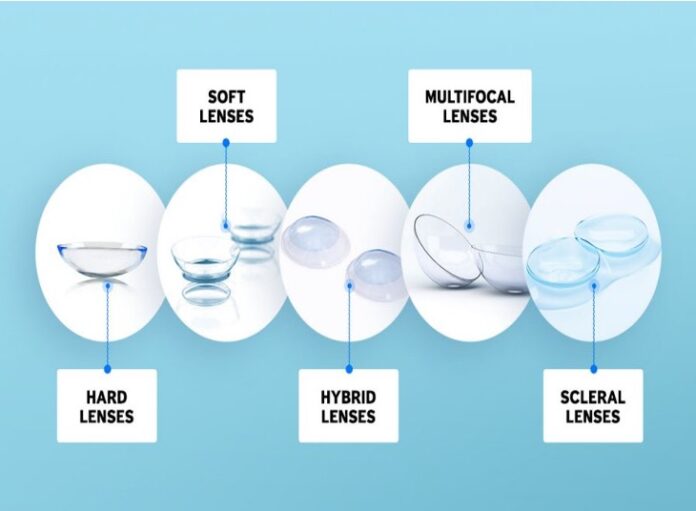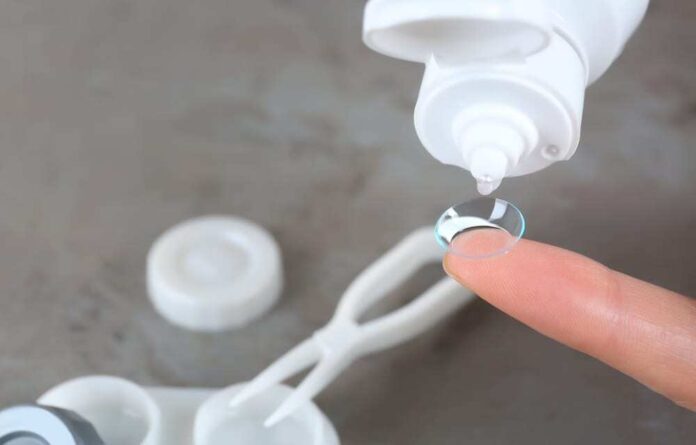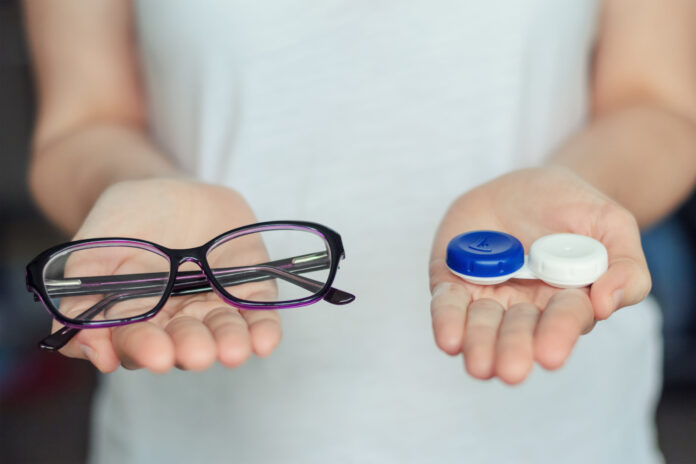When it is necessary to take action on vision, it is necessary to do it as quickly as possible. Why? Because if you go to the ophthalmologist on time, you will be able to see what the problem is, and also find a solution to the problem. Most of the time, people have a problem with their vision, that is, with the dioptre, so they wear glasses or contact lenses, which have recently become a more popular choice. Do you ever wear contacts? If yes, then you certainly know how annoying it can get when they start to irritate or even cause vision problems. And if you don’t wear them at all, then you might also be wondering why changing them every month makes sense. After all, you never want to go through the hassle of buying new ones each time you need to replace them.

Contacts come in two different lens types; soft (SCL) and gas permeable (GPS). They provide clear vision either indoors or outdoors. The main purpose of wearing contacts is to correct refractive errors such as nearsightedness, farsightedness, astigmatism, presbyopia, and other conditions where the eye cannot focus properly on objects at a close distance. However, whatever you decide to do, it is necessary to first have a consultation with your family ophthalmologist, see what the possibilities are and whether you can choose lenses, and then together make the choice of the ideal lenses for you. But there is one unclear thing. People are choosing lenses, but they don’t know how often to replace them, and that’s information they should know.
When it comes to replacing your lenses, a single pair should last around 12 months. There are some exceptions though, depending on your lifestyle and personal preferences. For instance, those who tend to spend their days outside often require GPS lenses since they offer greater protection from dirt, dust, and water. Those who perform regular exercise regularly should opt for SCL lenses instead because they are lighter and easier to remove during workouts. Furthermore, GSC lenses are better suited for those who need bifocal reading glasses. Finally, if you prefer to live more fashionably than sportily, then SCL lenses are ideal for you too. This is just some initial information that you need to know, and we will talk a lot more about contact lenses in the continuation of today’s article concerning how often you should change your lenses, but also many other details that are important to you. Let’s get started!
Things you should know and are very important

I was just thinking about changing my contacts… Do I need to? Why do they ask us to change them at least once a year? Is it possible to go without them for longer than that?
Here’s what we know about our eyes:
- Eyes are cameras – because the eyes are our cameras, it is necessary to regularly examine the eyes and try to keep them in a healthy state.
- When we look at something, the eye sends signals to the brain telling it what is happening – precisely because of this function it is important to dedicate yourself to their health and their good condition.
- Our nerves send messages to the muscles that tell them how to move – if you don’t take care of any problem in time, things can get even more complicated and eye functions can deteriorate.
- The muscles turn on certain chemical reactions inside the eyeball (or lens) to give the eye its color.
When we wear contact lenses, we are putting drops of liquid chemicals directly onto our cornea. In some cases, these drops may even enter the bloodstream. These drops contain preservatives and other chemicals that help prevent bacterial growth. But over time, these chemicals can build up around the surface of the eyeball (the cornea). As the buildup increases, the eyes become irritated causing pain and discomfort. We eventually reach the point where the eyes have no choice but to remove them.
Why should you get new lenses every 6 months?

The first thing you want to think about is that contact lenses are not designed to last forever. Every day, thousands upon thousands of people put their eyes under high pressure, then sleep at night. If you don’t change them often enough, bad things could happen. Eventually, tears can begin to leak out of the eye. Then bacteria begin to multiply and cause infection. Eventually, the soft tissue under the eyelid starts to break down. At that point, the contact lenses themselves start to loosen up and fall out. Sooner or later, you’ll need to take off those contacts.
If you’re going to keep wearing them, there’s only one way to do it correctly. Get new ones! New lenses are designed to fit your eyes exactly right. Not only that, but if you buy new lenses, you don’t have to worry about any leftover bacteria getting mixed. And best of all, you’ll never have to go back to your optometrist again.
So why wait to make sure you’ve got the perfect pair? Look at the offer that exists on the market and buy contact lenses at Optical Center.
Contact Lenses and Glasses

There are two types of lenses. Hard and Soft. Each type works differently. A hard lens is made of plastic or polymethyl methacrylate — similar to that used in camera lenses. Polycarbonate is also considered a hard material. Most of today’s hard lenses are tinted. Tinting changes the natural appearance of the transparent lens. Other hard lenses are made from cellulose acetate, silicone rubber, and other materials, and they aren’t tinted. An example of a non-tinted soft lens would be a gas-permeable lens. Gas permeability means that gases or air molecules can pass through the lens, while water and debris stay on the outside. Gas-permeable lenses are comfortable for many people who use them.
A soft lens is made of either poly(hydroxyethyl methacrylate), silicone, or polyvinyl alcohol. All soft lenses are clear. Many people prefer a soft lens because they feel more comfortable. However, sometimes soft lenses tend to slip out of place. Another good feature of soft lenses is that they are flexible and stretchy and therefore allow for greater movement. Because soft lenses are soft, they are also easier to clean and disinfect.
These are the things that you should keep in mind when it comes to replacing lenses, but also for using them in general. Now you have a much clearer view and better knowledge about them, so you can very easily judge when it is the right time to replace them.









